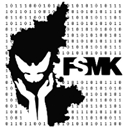How often do you screw your GNU/Linux based system such that you decide to reinstall your system? Are you the go-to person in your group for any issues with any GNU/Linux based OS? How often do you suggest to people who come to you that there is no other way to recover than re-installing?
I have been helping people to migrate to GNU/Linux based distribution, mainly Ubuntu. And its quite often that I come across people who while doing something or other have messed their system and need to help to fix it up. More than often, I used to give up quite quickly and ask them to take a backup using live-boot and reinstall the system. Many times, I would just search for first error I noticed and see if I could get solution online and if that didnt work give up and ask to reinstall. Though this is quick, it actually meant that I wasnt learning anything new. It also meant that many things in Ubuntu which might have been actual bugs might not be getting noticed due to this. And it also contradicted one of the popular examples I used to mention as to why Free Software is better than proprietary? Have you noticed the Blue Screen of Death, Can you fix it on Windows? Because Free Software allows you to study it and play with it, you can know why your system has actually crashed and try to understand how to fix it. Really? How often do we do that?
Hence I have decided to start this self-campaign and if possible motivate others to also follow it where in I put my maximum whenever I come across a messed up system to recover it without reinstall. The way the success of this campaign will be judged is by maximum number of systems I can avoid reinstall before coming across a system I am forced to reinstall as I cant find any other way around it. Hopefully as time goes on, the gap between every two systems forced to reinstall will increase which would mean I am improving/learning and avoiding many more systems from re-install.
I am already successful in doing it for 1 system. Hoorrrraaaayyyy!!!!! Hence #AvoidedReinstall 1 I spent 3 nights on it, close to 8-10 hours in all but finally it is recovered and system is now working without having to re-install Ubuntu. Hope to find sometime and blog about it also.

